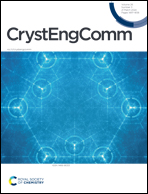Optimizing the structure and optoelectronic properties of cuprite thin films via a plasma focus device as a solar cell absorber layer
Abstract
Solar cells are of growing importance as a renewable energy source, and cuprite (Cu2O) stands out as a promising material due to its cost-effectiveness, abundance, and appealing optoelectronic characteristics. This research uses diverse analytical methods to adjust the influence of the number of plasma focus shots on Cu2O films' crystal structure, morphology, and optoelectronic attributes. X-ray diffraction revealed that both Cu2O and CuO films exhibited a polycrystalline nature with cubic (111), (110), and (200) orientations. Morphological analysis unveiled that film surface characteristics were impacted by the number of shots, leading to the formation of smaller Cu2O grains as the number of shots increased. The transmittance spectra of Cu2O thin films displayed remarkable optical transparency, approximately 80%. The optical bandgap of the films was determined to be 2.57 eV, decreasing to 2.08 eV with an increase in the number of shots, aligning well with values reported for photovoltaic absorber layers. Optoelectronic properties, including optical and electrical conductivities, optical mobility, optical carrier concentrations, refraction loss, optical resistivity, plasmon, and damping frequencies, were computed. The results underscore the significant impact of the number of plasma focus shots and hold great promise for enhancing the performance of Cu2O-based solar cells.



 Please wait while we load your content...
Please wait while we load your content...